17. Chromatin Remodeling, Histone Modification, and Methylation and Cell memory
1/23
There's no tags or description
Looks like no tags are added yet.
Name | Mastery | Learn | Test | Matching | Spaced |
|---|
No study sessions yet.
24 Terms
3 mechanisms of transcription regulation
Chromatin Remodeling Complexes
Histone Modifying Enzymes
DNA Methylation
what is a nucleosome
basic structural unit of DNA packaging consisting Histones + DNA
able to restrict access of transcriptional machinery (TM) to DNA
Altering Chromatin structure/ packing can be done via
Chromatin Remodeling Complexes
Histone Modifying Enzymes
** allows or disallows DNA access for transcription → regulator
Chromatin-remodeling Protein Complexes
Enzymes that use ATP hydrolysis to alter the physical repositioning of nucleosomes in chromosomes through nucleosome sliding and ejecting
provides immediate access to specific gene
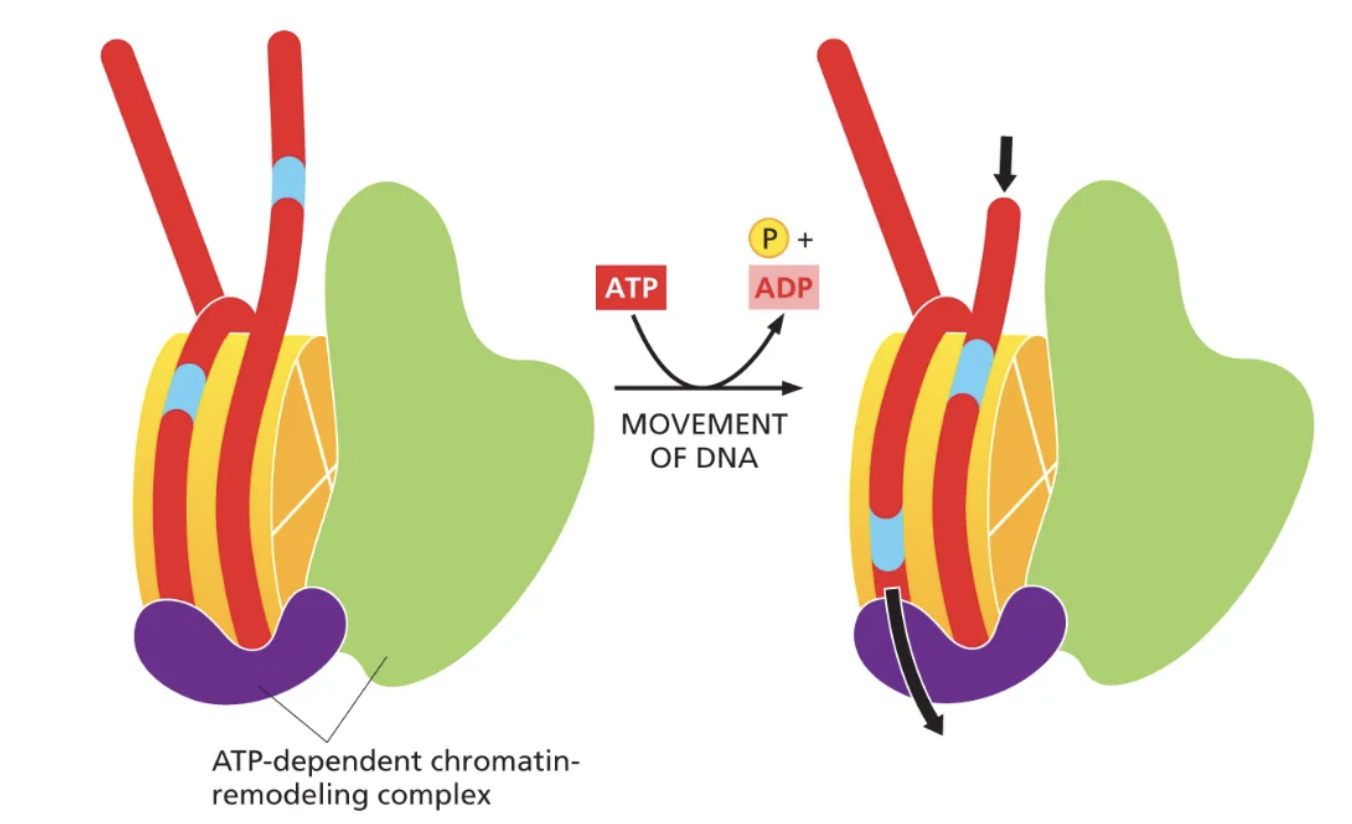
Histone-Modifying proteins
Enzymes that alters the interaction between histone and DNA
remove or add covalent modification on the tails of the core Histones (direct modification)
acetyl → Loosen via lysine adding neg charge that neutralize the pos charge of histone tail, reducing the affinity for nucleosome
phosphate
loosen → neg charge for neutralization via serine
tighten → attract condensing protein
recruit chromatin remodeling proteins (indirect modification)
methyl groups : serves as a binding site for proteins that can both loosen or tighten the chromatin
histone modifications are reversible
3 Covalent modification placed by histone modification enzymes are
acetyl, phosphate, or methyl groups
DNA methylation (CH3)
addition of methyl group on the 5’ carbon of cytosine base on CpG site(not histone tail = histone modifying enzyme)
Methylated CpG → gene repression → recruit condensing proteins
Unmethylated CpG → gene activation → recruit de-condensing protein
5’ - C G - 3’
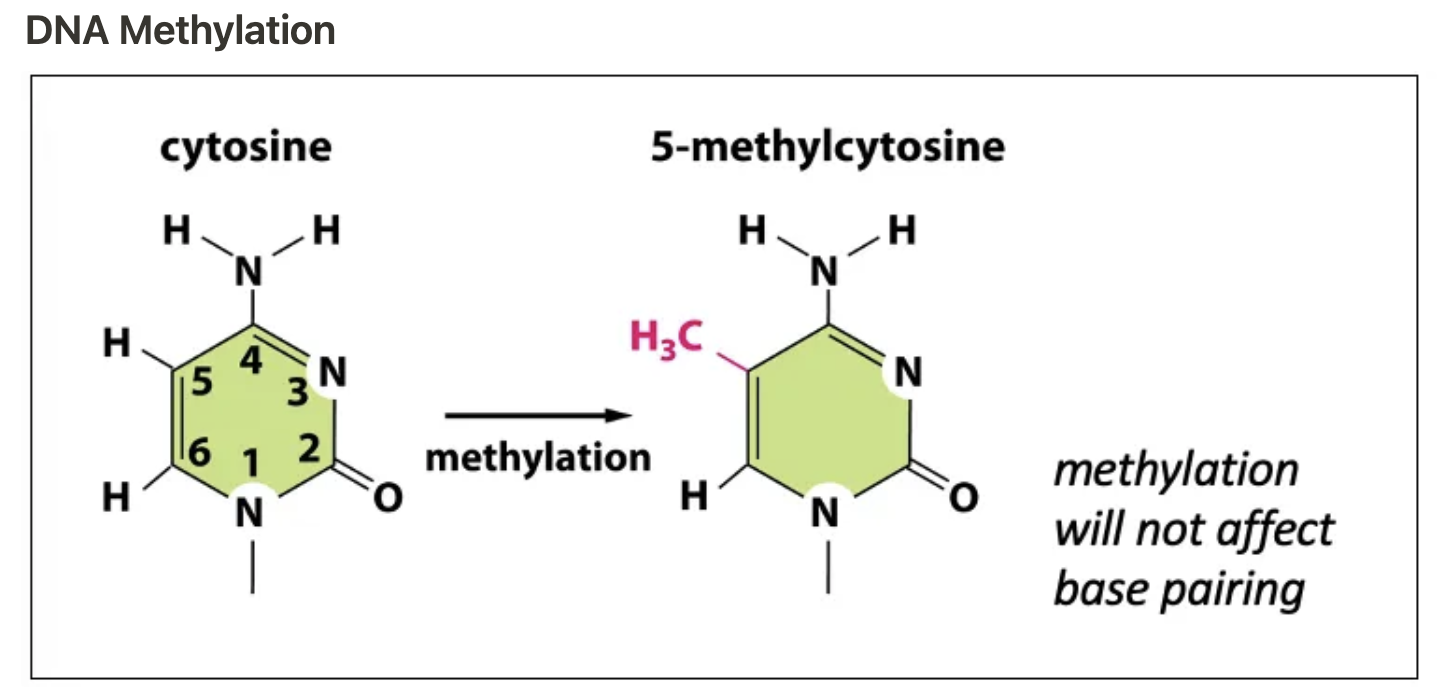
CpG site is
target gene for DNA methylation where C falls next to G near promoter w high concentration of CpG site

interphase (cell cycle) Chromosomes
non-uniform packing of chromosome → allows G1 S and G2 phase
Constitutive Heterochromatin → always condensed / silenced
Facultative Heterochromatin → able alter accessibility
Euchromatin → less condensed gene that is actively expressed
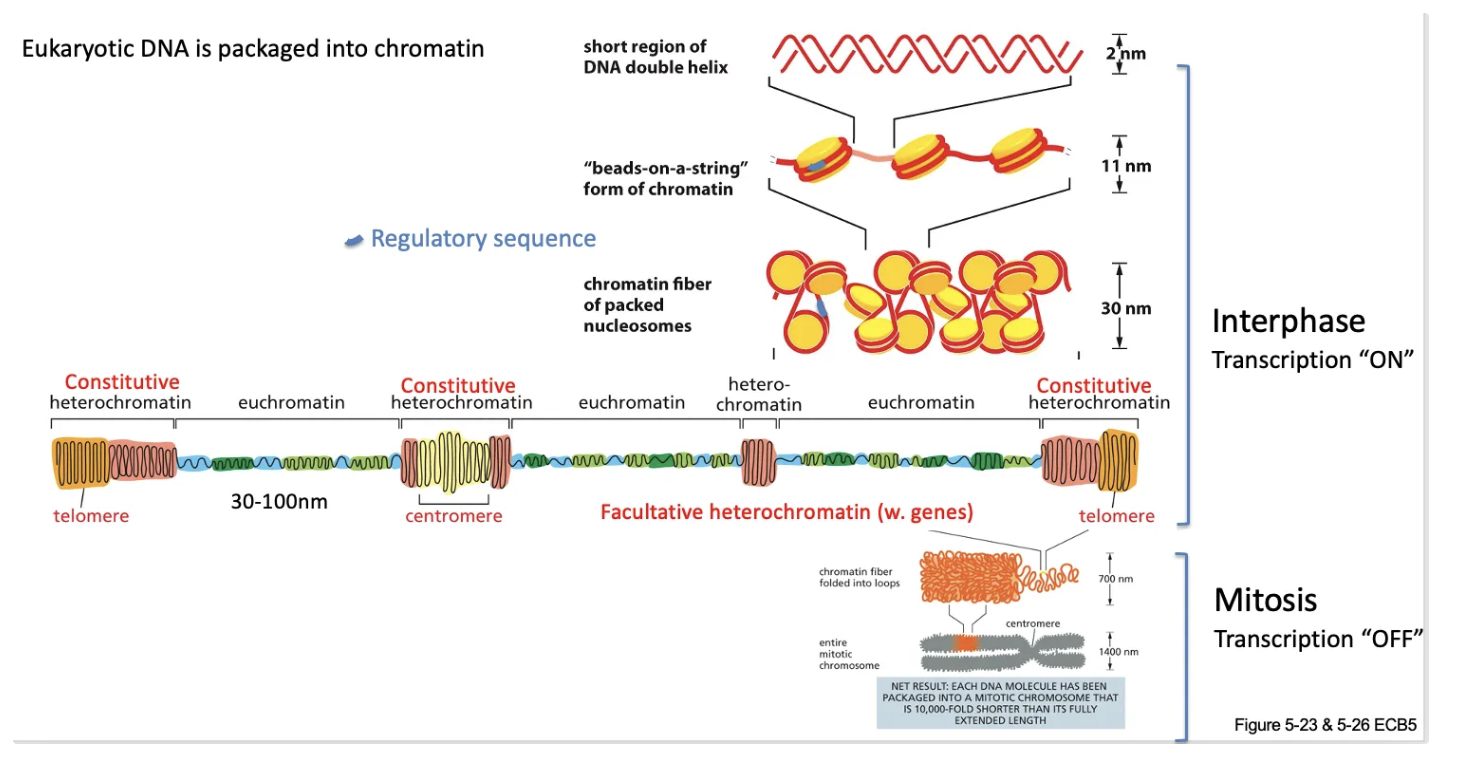
X-Inactivation is a form
extreme gene silencing where one of the two X chromosomes in female embryo is randomly silenced permanently
X-inactivation is irreversible and via an epigentic mechanism
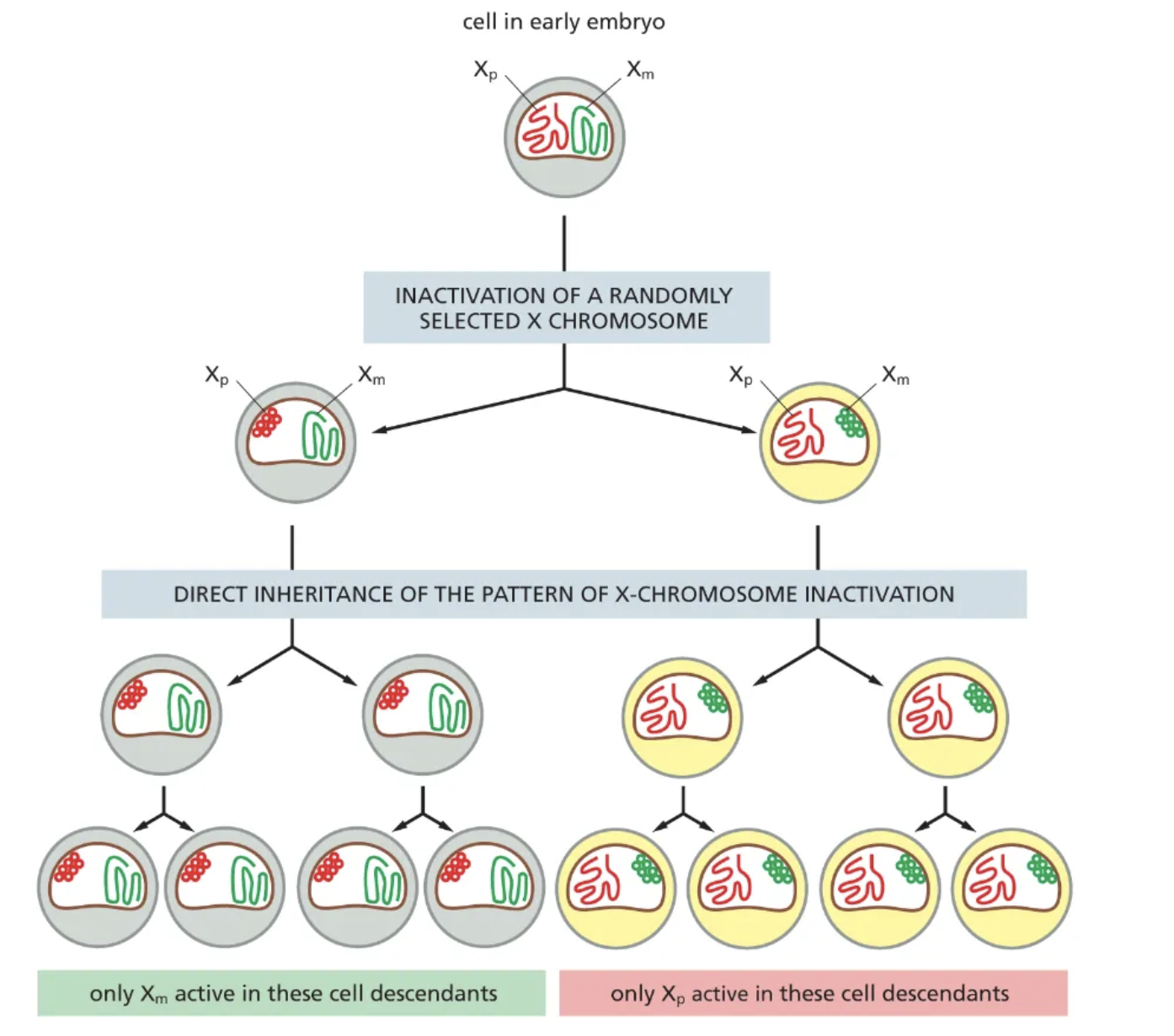
Dosage compensation is
mechanism to equalize the amount of x-chromosome gene expression for males and females through X-inactivation of female embryos
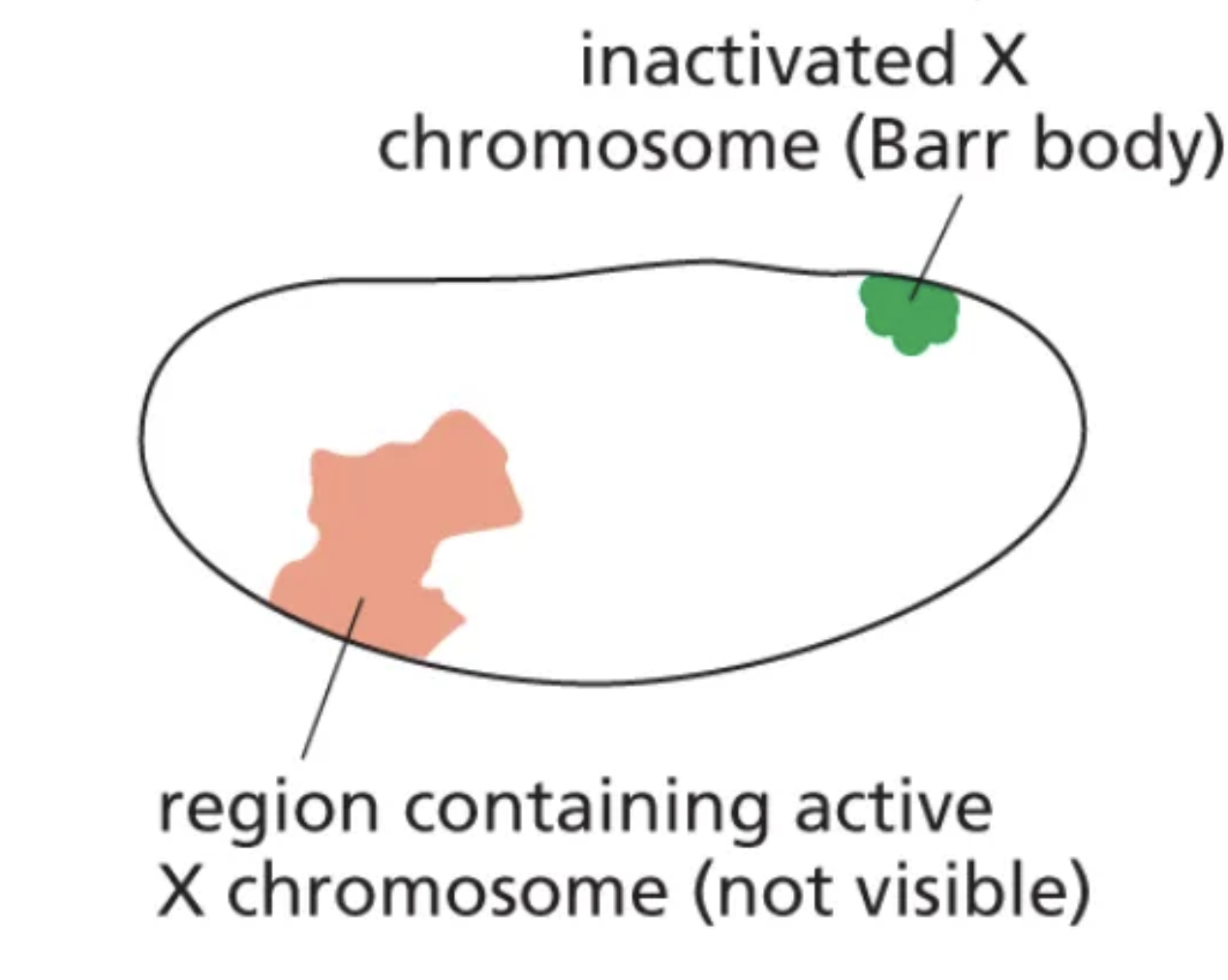
example of dosage compenstation
Kitten born from a mother expressing both Orange and Black will only express black in active X chromosome
orange gene will not be expressed bc its in the silenced X chromosome

transcription regulator can
recruit appropriate chromatin modifying proteins and chromatin remodeling complexes to initiate transcription
Activator → recruit complexes that loosens that chromatin
Repressor → recruits histone deacetylases that removes acetyl group
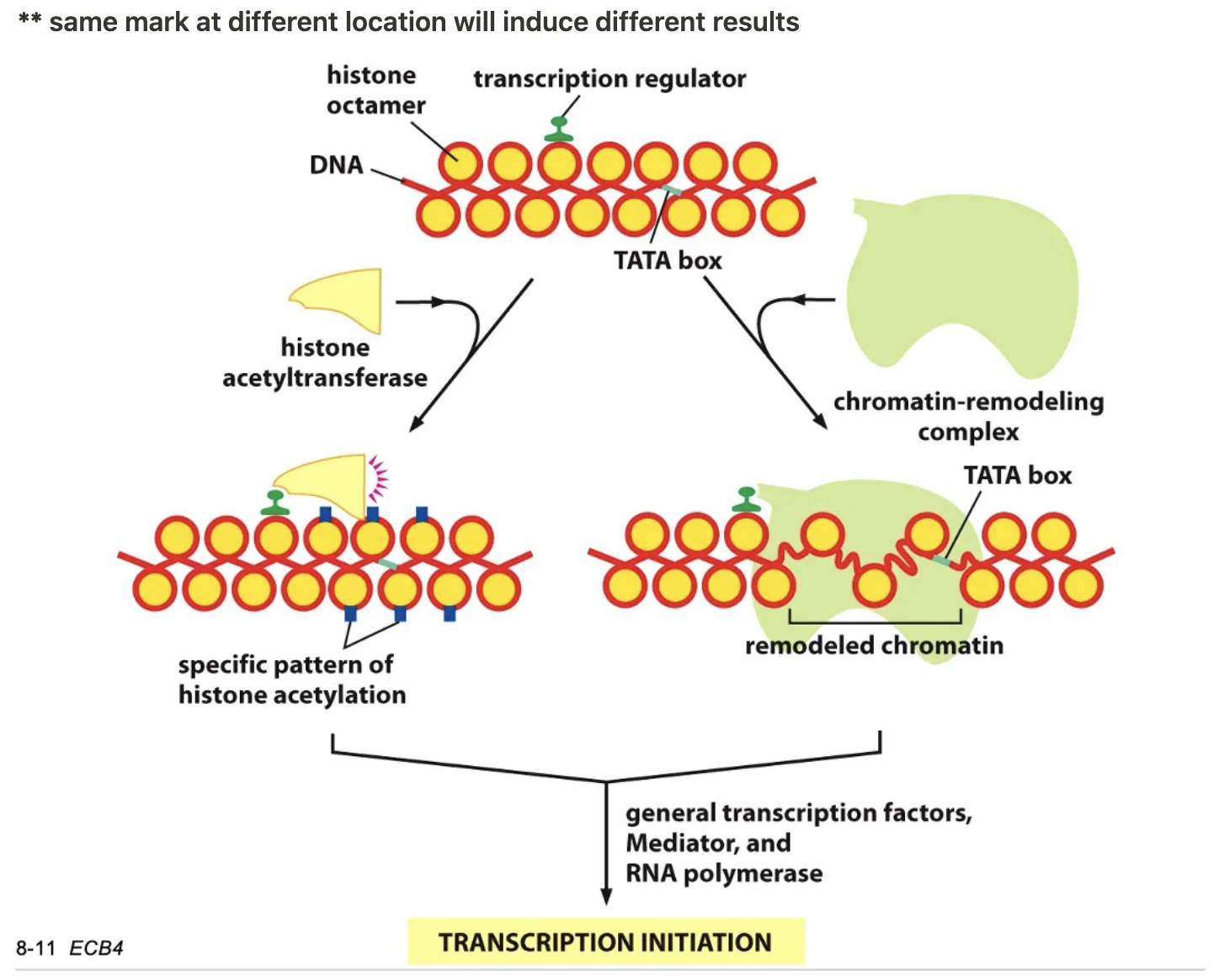
3 mechanisms of maintaining cell identity
Positive feedback loops
Histone Modification
DNA methylation
Cell memory is
the pattern of gene expression responsible for the cell’s identity to be remembered and passed on to its daughter cells trough all subsequent cell division for a proliferating cell to maintain its identity and function
Methods of keeping Cell Memory: Positive Feedback loop
master transcription regulator activates its own gene, ensuring its continued presence in daughter cells and sustaining cell identity
continued stimulation ensures regulator is distributed to both daughter cells each cell division
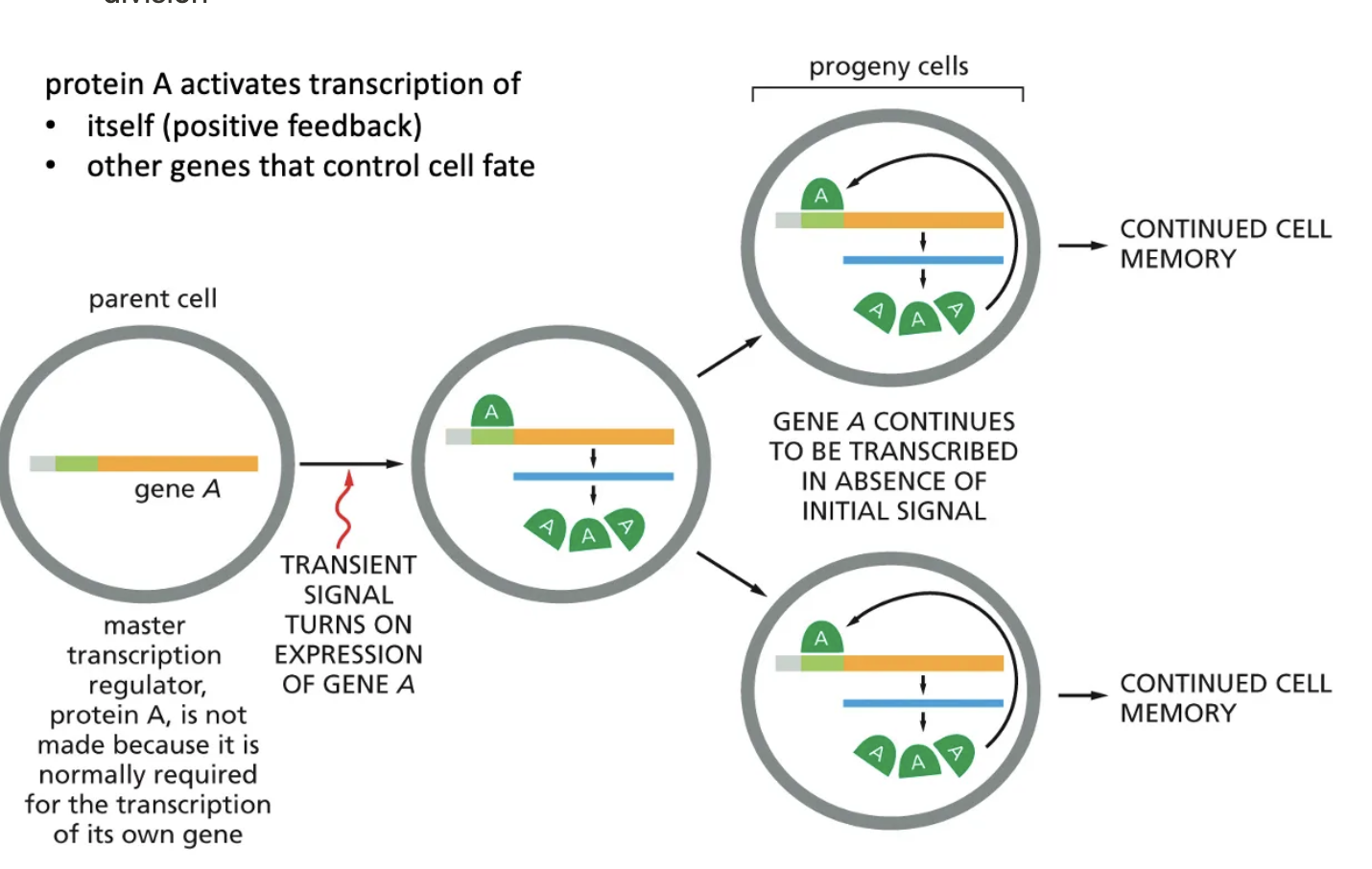
Methods of keeping Cell Memory: DNA Methylation
passed on to progeny cells via maintenance methyltransferase
Template strand after replication carries on the methylation but not the newly synthesized one
maintenance methyltransferase recognizes this methylated CpG site
attaches methyl group on the newly synthesized strand

Methods of keeping Cell Memory: Histone Modification Inheritance
During DNA replication, daughter nucleosomes inherit half of the parent Chromosome’s histones with modifications
which are then replicated by histone-modifying enzymes, aiding in maintaining chromatin structure (e.g., heterochromatin).
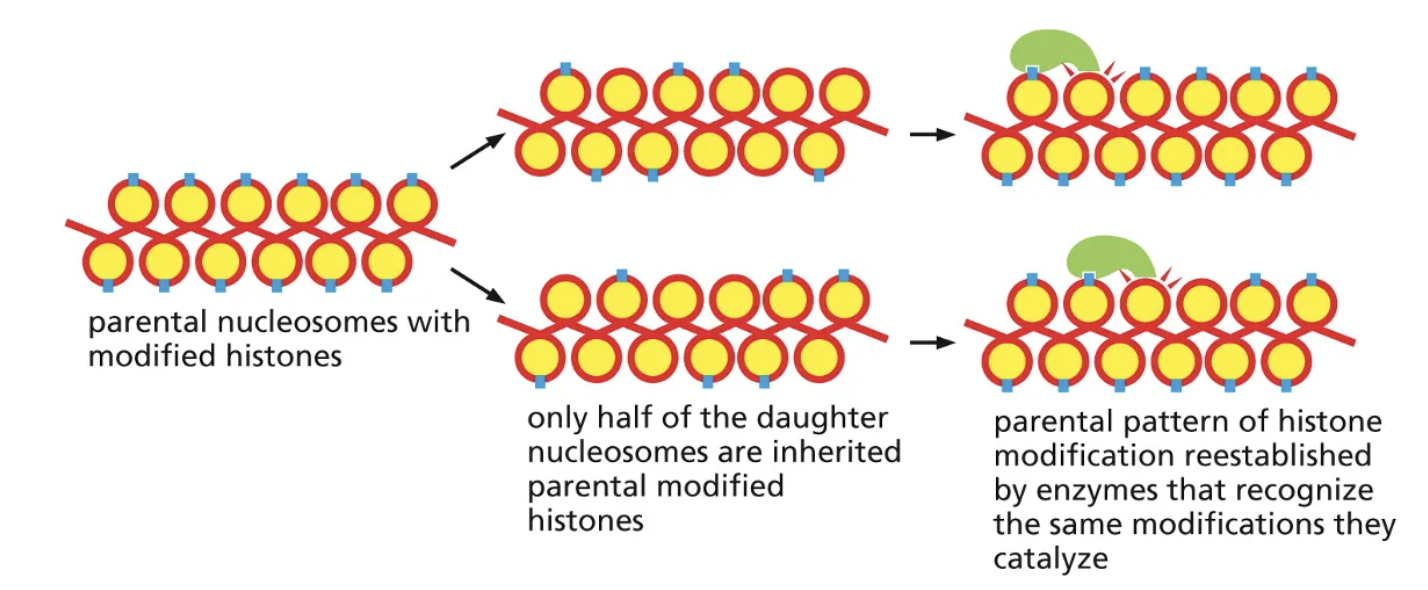
Epigenetic Inheritance is
patterns of gene expression that are passed on from parent to daughter cells during mitosis without altering the actual genetic sequence of the DNA
allow cells to "remember" environmental signals, impacting cell function
potentially contributing to Genetic diseases.